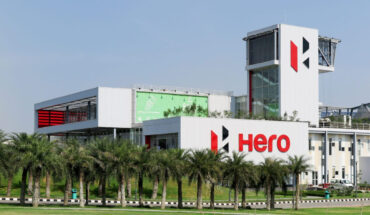KPL Global Infrastructure Limited (KPIGIL) – a Solar Power Generation company — will be launching its IPO of 49,92,000 equity shares at issue price of Rs 80 per equity share — aggregating upto Rs 39.93 crores — from January 8, 2019 to January 11, 2019. The Equity Shares are proposed to be listed on the SME platform of BSE.
 Faruk Patel, CMD, KPIGIL, said here today that the company proposes to increase its solar power generation capacity by setting up a solar power project for 25MW at its Solarism plant itself — for which about Rs 13,203.76 crores would be needed — and has entered into PPAs for this with reputed customers like L&T Group, United Phosphorus Limited and Colourtex Industries Private Limited.
Faruk Patel, CMD, KPIGIL, said here today that the company proposes to increase its solar power generation capacity by setting up a solar power project for 25MW at its Solarism plant itself — for which about Rs 13,203.76 crores would be needed — and has entered into PPAs for this with reputed customers like L&T Group, United Phosphorus Limited and Colourtex Industries Private Limited.
While post-commercial announcement IPP capacity will increase to 40MW, Power Finance Corporation Limited has sanctioned a term loan of Rs 86 crore and the balance of the Rs 13.203 crores would be met from internal accruals, equity and proceeds from the IPO, Patel said, adding that the company, in the financial year ended March 31, 2018, had achieved total operating revenue of Rs 31.56 crores with PAT of Rs 11.41 crores and the company’s Net Worth at Rs 61.48 crores.
The company focuses on providing solar power under the brand name Solarism both as an Independent Power Producer (IPP), and as service provider to Captive Power Producer (CPP) customers. It builds, owns, operates and maintains grid-connected solar power projects as IPP and generates revenue by entering into Power Purchase Agreements with third parties for selling power units generated through its solar projects.
Shaheedul Hasan, COO, KPIGIL, said the Solarism plant is set up on 208 acres of land in Bharuch in Gujarat, besides also having a 13.25 kms-length, 66KV transmission line from the plant to the Gujarat Energy Transmission Corporation Limited substation at Amod for evacuation of the solar power generated in the Solarism plant.
The Indian power sector is forecast to attract investments of R 11.56 lakh crores and, despite solar power rates crashing to Rs 2.44 per unit, the company was successfully charging Rs 6.08 per unit to customers like Mafatlal and two other companies in PPAs signed for 15 years, he said, adding that the company will deploy its 25MW project within the next six months as it has land where radiation is high and less dust pollution for using such projects.
India has the fifth largest power generation capacity in the world and ranks as third largest producer and consumer of electricity globally with installed power capacity reaching 343.90GW as of June 2018. India has also raised the solar power generation capacity addition target by five times with expectations of reaching 100GW by 2022. The Union Government is preparing a “Rent a Roof” policy for supporting its target of generating 40GW of power through such solar rooftop projects by 2022.
“We believe that the renewable energy sector in India has strong development potential in the light of the prevailing demand-supply gap, favourable government policies, related legislation promoting the use of renewable energy resources and growing awareness of the importance of reducing dependency on fossil fuels for environmental and energy security reasons. Electricity consumption in India is increasing rapidly, largely due to India’s rapid industrial and economic growth.”
According to MNRE, India has solar power potential of ~749GW — out of which Gujarat has the potential of ~35GW solar power. To help meet growing demand for electricity, the Indian Government has put in place relevant policies to encourage private sector investment in creation of additional power generation capacity and, in particular, development of the renewable energy sector, such as exemptions from the cross subsidy charge, additional surcharge, wheeling charge, reduced wheeling losses (3% as against 10%), and accelerated depreciation benefits.
“Our project site is surrounded adequate amount of vacant land which gives our company an opportunity to further expand our power generation capacity by acquiring such land and increasing our power generation capacity in future,” Hasan added.






